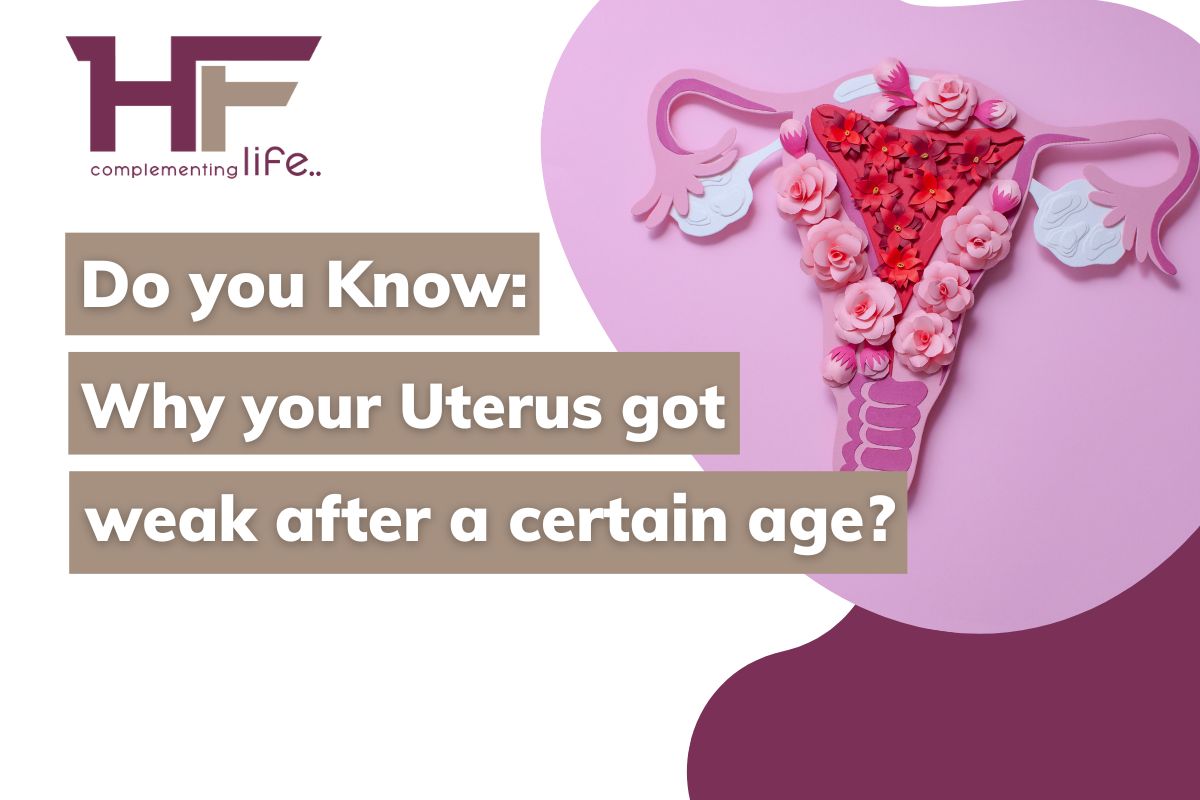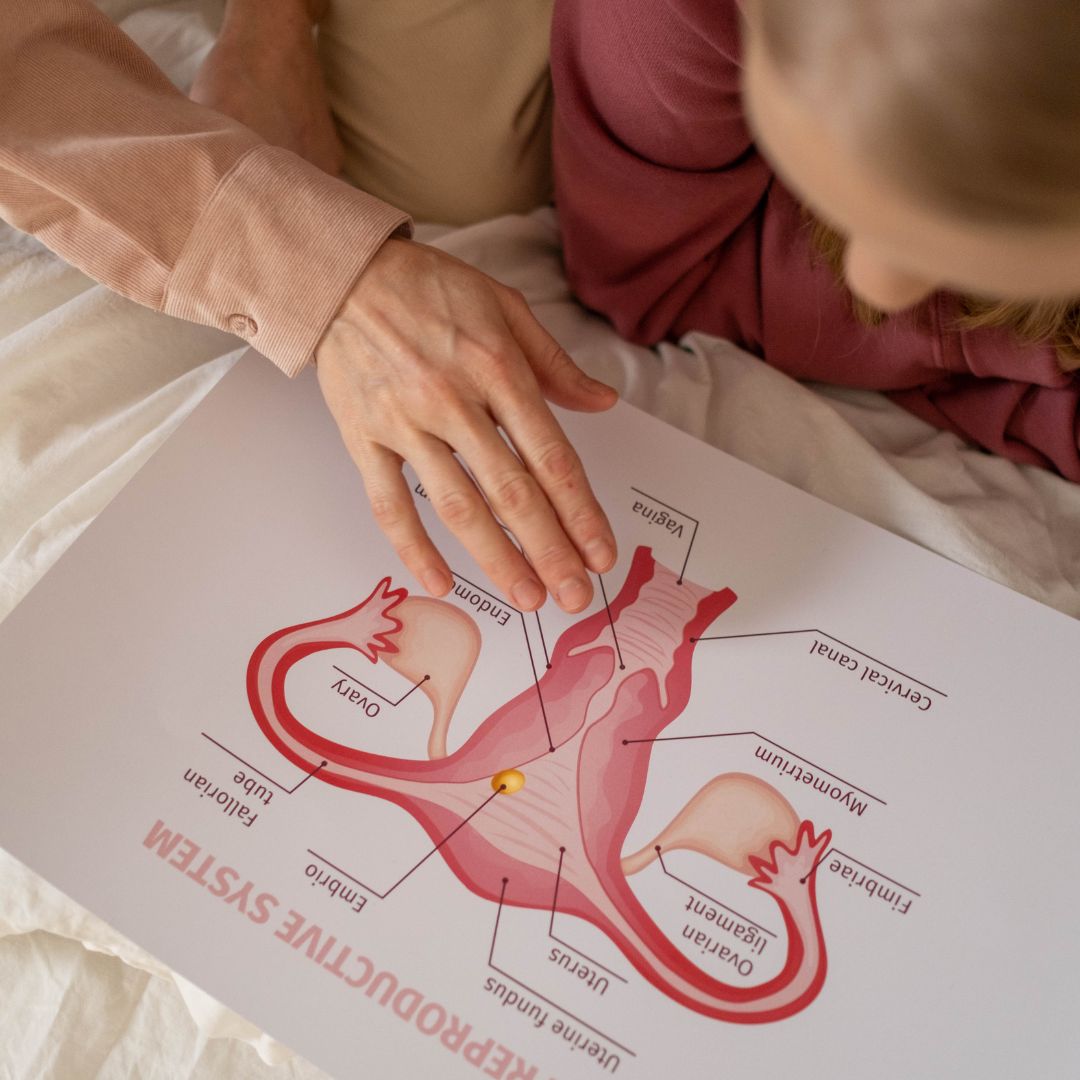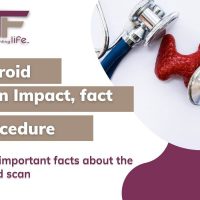“Do you know: Why your Uterus got weak after a certain age?”
Of course,
Your uterus didn’t just get weak like that!
There is a health condition that led to such a problem, and the name of that condition is Uterine Prolapse.
Now, you must be wondering what this condition is.
To begin with,
Uterine Prolapse is when your uterus slips down into your vagina or protrudes out of it. This usually happens when the pelvic floor muscles or ligaments elongate and turn weak. During this time, these muscles cannot provide any kind of energy support to your uterus.
In short, Uterus Prolapse is when it sags out of its original position.
This article shall give you an in-depth account of why your uterus weakens after a certain age and what you can do to prevent it from appearing sooner. So, do not hesitate to read from below.
CContents
Who may have a Weak Uterus?
Why your Uterus got weak after a certain age?
It is needless to say that a weak uterus is a condition occurring in women only, but, the question is – Who are those women more vulnerable to a weak uterus with the advancing age?
Think in yourself,
- Did you have one or multiple vaginal deliveries already?
- Do you have a family history of genital prolapse or uterine prolapse in particular?
- Are you post-menopausal? Or, in simple words, are you the one suffering from a delay or total skip of your menstruation for a period of twelve months straight?
- Are you involved in excessive weight lifting?
- Do you have an extremely whitish skin tone?
If any of these or all match from among the checklist, beware, you may be vulnerable to a weak uterus in the near future!
What are the Causes?
No doubt, like any other health issue, numerous factors contribute to the rise of Uterine Prolapse. They are as follows!
- The first and the most common cause is aging. With age, you may witness a loss of muscle tone in your reproductive body system, in turn, suffering from a weak uterus.
- The second cause is when you have a history of complicated pregnancies or childbirths. Or, if & when you have a complex delivery through the vagina. In fact, if you have an injury during the delivery that occurs mostly in the case of large babies or many of them together, a weak uterus is likely to be spot on.
- The third cause is quite straight and visible right away, even when you are not aging out. That is nothing but obesity! It is because of the intra-abnormal pressure that weakens the pelvic floors and fascia.
- The fourth cause is also visible among women of any age group; the ones who have a weak uterus. It is chronic constipation! Yes, as we all know, the acute strain to pass stool anyway creates a huge amount of pressure in the uterus, subsequently resulting in the weakening of its pelvic floors!
- The fifth cause revolves around an unfavorable circumstance after menopause when you lose tissue tone. Another such instance can be a sudden loss of natural estrogen!
- The next cause that is likely to weaken your uterus after a certain age can be a rare health issue like a pelvic tumor or maybe an accumulation of fluid in your abdomen.
- Another cause of Uterine Prolapse can be any recent or previous major surgery in the pelvic area, leading to the loss of external support.
- Other causes of Uterine Prolapse can be chronic cough, bronchitis, and asthma that continuously creates pressure on your pelvic floor.
- Above all, there exists one cause that can independently affect your vaginal flora and multiplies the odds of bacterial vaginosis and genital prolapse like this. Such a cause is what we call tobacco smoking in brief!
What are the Symptoms?
Like any other health issue, a weak uterus also comes with certain red flags or symptoms. Do you want to know what they are?
Here goes!
- You may feel pressure in the pelvis, sometimes chronic and even persistent.
- You may have abdominal pain, lower back pain, or pain inside the pelvis.
- You may witness severe pain while having sexual intercourse.
- You may often discover unusual discharges from the vagina, that may even be excessive at times.
- You may also come across bladder infections frequently.
- You may find your uterus tissue falling through the vaginal opening.
- You may encounter different urination problems that include inconsistent and involuntary loss of urine, frequent urination needs, and sudden urgency to urinate at intervals.
- You may suffer from discomfort in moving your bowels and, at times, even walking
Disclaimer! For people having mild cases of uterine prolapse, there may not be any obvious symptoms.
And,
Symptoms can get worse when you walk or stand for a long span. Herein, gravity may pose extra pressure on your pelvic muscles.
Occurrence of Uterine Prolapse: Stages?
This particular health condition occurs in four stages or degrees, and they are here down the line!
Degree 1 – It is the stage where the cervix drops into the vagina.
Degree 2 – At this stage, the cervix drops inside the vagina to a certain level, however, situating at the opening end.
Degree 3 – Thy is a risky stage where the cervix comes out of the vaginal opening.
Degree 4 – The fourth degree or the final stage is called procidentia. During this stage, the entire uterus comes outside the vaginal opening. Such a condition happens due to the weakening of all supporting muscles.
Risk Factors/Negative Consequences of a Weak Uterus:
Well, Uterine Prolapse is the kind of health problem that can further take you to several other reproductive health complications because of the weakening muscles that hold the uterus in place. Discover the complications below!
-
- Cystocele – Cystocele is a condition where the upper front wall of the vagina bulges out, i.e., herniation in the words of medical science, due to a part of the bladder dropping from its original location inside the pelvis and pushing the vaginal walls. This condition is also known as prolapsed bladder and may create setbacks like the loss of urine or urinary urgency, retention, & frequency. Even though cystocele is not a life-threatening disease, it may further impact negatively with issues like kidney damage or kidney infections.
- Enterocele – Also known as small bowel prolapse, Enterocele is the condition where, following its name straightaway, the small bowel portion (small intestine) dislocates and descends into the lower pelvic cavity, thereupon bulging into the vagina. In turn, the upper rear vaginal wall bulges out. During this condition, standing for a long time may end up with backaches that are only relieved when you lie down. Sometimes, life-threatening, but mostly affects aged people. According to statistical data, this health problem is found mainly among women above the age of 60.
- Rectocele – Rectocele, often called Posterior Vaginal Prolapse, is a complex health condition where the walls of the tissues separating the vagina and rectum suffer from wear & tear, following the bulging of the rectum into the vagina! As a result, the lower rear vaginal walls also keep bulging out. If left untreated for a long, Rectocele can make your bowel movement difficult to such a point that you would have to push on the inside of your vagina so as to empty the bowel. Alas! This health problem may not show any sign of its existence unless you see the tissues pushing into the vagina.
That is why it is always better to see a doctor if you know who you are and your history as a whole or when you notice any symptoms as stated in the previous segment of this article.
How to Prevent the condition of Uterine Prolapse?
We all know, that prevention is better than cure, but in this case, you may not find the complete solution because of the inevitable aging process. Yet again, you can apply some basic strategies to get away from it while it’s developing or refrain from worsening.
The prevention strategies are –
- You have to perform some pelvic floor exercises like Kegel’s exercises.
- You have to avoid heavy lifting.
- You have to use appropriate body mechanics if and when lifting is requisite. How about a quick look at some of the proper lifting techniques?
1) Primarily ensure a firm footing before lifting objects.
2) Make sure you don’t lift objects that are too heavy for you to lift alone.
3) Make sure you don’t lift any oddly shaped objects.
4) While lifting an object that lies a level lower than your waist, make sure your back is straight. Then, bend at your knees and hips. But, make sure you do not bend forward with straight knees, giving pressure on your waist!
5) Make sure you do not shake the objects up to your body or twist them around. Instead, stand upright.
- You have to maintain a healthy weight by having a balanced diet & regular exercise.
- You have to manage chronic cough by taking steam.
- You can consider taking a therapy during menopause which is called estrogen replacement therapy. This therapy involves the replacement of estrogen that your body doesn’t require any longer.
- You may also opt for medications to apply over your vagina. Search for an estrogen cream or suppository ovules that restore the strength and vitality of the tissues located in your vagina.
- You have to regulate your constipation problems by eating high-fiber foods.
- You have to quit smoking once and for all!
Diagnosis & Treatment of Uterine Prolapse:
When the condition of a weak uterus is way beyond your control & prevention, diagnosis, and treatment are the only way out!
Here, the question that is plausible to pop up is how the process of diagnosis and treatment works herein.
The answer to that would be…
- Diagnosis of a weak uterus would involve a physical examination of the pelvis.
- Before that, the doctor will ask you for your medical history & medication lists.
- Once you enter the cabin, the doctor will check you both while standing and lying. Furthermore, asking you to cough or strain so as to enhance the pressure on your abdomen!
- Ultrasound may be used on several occasions to rule out pelvic issues. For this test, you have to go to a diagnostic center referred by the doctor and sign the papers of consent. During the test, a small wand-like machine will be inserted through your vagina and passed from over your abdomen to take clear images of your uterus, other reproductive organs, tissues, & cells via sound waves.
- Sometimes, your doctor may even ask you to do Magnetic resonance imaging (MRI) or renal sonography for better accuracy in the imaging, and also when the condition is much more severe.
Then comes the treatment part! Here, the entire process shall vary depending upon the condition of the supporting structure around your uterus. The development of medical science has brought up various significant surgeries to help solve the problem of a weak uterus. Perhaps, surgeries are done, but, depending on your age, whether it can be total removal of the uterus or a repair of it.
Two common surgical options for curing uterine prolapse are –
Prolapse Repair with Hysterectomy – This surgical procedure includes the removal of the uterus through a cut or small incision in the vagina or through the abdomen. They are called vaginal hysterectomy and abdominal hysterectomy, respectively. Undoubtedly, this major surgery means the complete eradication of the possibility of pregnancy!
Prolapse Repair without Hysterectomy: This surgical option stands for the repair of your uterus back to its normal position without any kind of cuts or incisions in the body. The surgical process involves the reattachment of the pelvic ligaments to the lower part of the uterus in such a way that it holds itself in place. Uterine suspension can be done either through your abdomen or your vagina, depending upon the technicalities of the surgery.
Also, there exists a non-surgical cure!
Such a cure needs the help of rubber or a plastic doughnut-shaped device called Pessary. Herein, you need to fit under or around the lower part of the uterus, also known as the cervix. The main attribute of this device is it helps the uterus to prop up and stay in its place. Your doctor does the job of inserting, adjusting, & fitting the device. All you need to do is clean the device frequently and also remove it before having sexual intercourse.
Conclusion:
Are you still reading?
If so, then by now, you must have enough insight about what exactly happens in this medical condition of a weak uterus, especially when you reach a certain age. For more discussion on this medical condition when met with any of the signs and symptoms, consult a doctor at HealthFinder.in.
[…] Now, it’s time to wrap up! I hope this article serves the purpose and may help you follow a proper workout routine when you are on your periods. For more queries about how to indulge in a proper exercise session during your periods, write to us at HealthFinder.com. You can also drop an email at [email protected] Stay tuned, Stay safe! You may also read this article: Why does your Uterus get weak after a certain age? […]











Comments